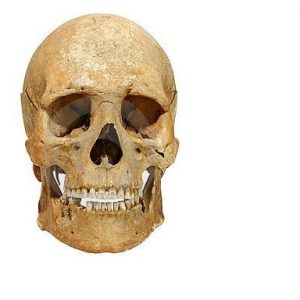I recently had the privilege of being the co-director of a NEScent meeting exploring the relationship between human evolution and dental disease. This meeting brought together clinical dentists, anthropologists, primate researchers, as well as dental researchers. Most people have never heard of NEScent. It is one of those arms of the federal bureaucracy that grants seed money to scientists with interesting ideas that otherwise would not get funding. In their words, “NESCent promotes the synthesis of information, concepts and knowledge to address significant, emerging, or novel questions in evolutionary science and its applications. NESCent achieves this by supporting research and education across disciplinary, institutional, geographic, and demographic boundaries.” The meetings are run at Duke University in North Carolina and are supported thru the National Science Foundation.
Our project was titled, “Evolution of Human Teeth and Jaws: Implications for Dentistry and Orthodontics” It came about when I was talking to an anthropologist friend of mine, Dr. Peter Ungarand we realized together that tooth decay was uncommon to the point of being practically non-existent before the dawn of agriculture.
In a nutshell being “human”, defined by our genus, Homo, not our species, sapiens. Thus, humanity is a 2.5 million year experiment in evolution while our species, sapiens is only about 250,000 years old. I was surprised as this is relatively unknown. When you are talking about evolution one of the most important things is the number of generations a species has had to adapt and evolve. If you allow 20 years for an average generation that means that humans have been evolving for 125,000 generations old. Fixing a date at 8,000 BC for the agricultural revolution means that we have only been eating seed grains for only 500 of those 125,000 generations. 124,000 generations as a hunter-gather vs. 500 as a farmer. Which diet do you think we are more adapted to eating?
The great thing about examining the fossil record is that teeth preserve very well. The anthropologists presented picture after picture of pre-agricultural human jaws that had 32 (a normal complement) of teeth that were neither crooked nor decayed. The primate researchers showed us jaws from wild gorillas that had no decay as well as jaws from gorillas that fed on human food that was riddled with decay.
The truth is that tooth decay is a relatively new phenomenon. Until the rise of agriculture roughly 10,000 years ago, THERE WAS NO TOOTH DECAY IN HUMANS. Let that sink in for a moment. Humanity is 2,500,000 years old. For the fist 2,490,000 years no one ever had a cavity. If we understand that tooth decay started when people started farming instead of hunting and gathering for a living clearly you realize that tooth decay is a disease or mismatch between what you are eating and what your body expects you to eat. If we examine the past as prologue it becomes clear that the path to proper health starts in the mouth and the answers are so simple that not only did a Cave Man do it. They perfected it.


